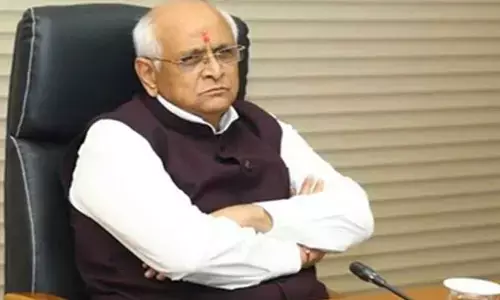Metric system overhaul will dethrone the one, true kilogram

Like an aging monarch, Le Grand K is about to bow to modernity For 130 years, this gleaming cylinder of platinumiridium alloy has served as the worlds standard for mass
Like an aging monarch, Le Grand K is about to bow to modernity. For 130 years, this gleaming cylinder of platinum-iridium alloy has served as the world’s standard for mass. Kept in a bell jar and locked away at the International Bureau of Weights and Measures (BIPM) in Sèvres, France, the weight has been taken out every 40 years or so to calibrate similar weights around the world. Now, in a revolution far less bloody than the one that cost King Louis XVI his head, it will cede its throne as the one, true kilogram.
When the 26th General Conference on Weights and Measures (CGPM) convenes next week in Versailles, France, representatives of the 60 member nations are expected to vote to redefine the International System of Units (SI) so that four of its base units—the kilogram, ampere, kelvin, and mole—are defined indirectly, in terms of physical constants that will be fixed by fiat. They’ll join the other three base units—the second, meter, and candela (a measure of a light’s perceived brightness)—that are already defined that way. The rewrite eliminates the last physical artifact used to define a unit, Le Grand K.
The shift aims to make the units more stable and allow investigators to develop ever more precise and flexible techniques for converting the constants into measurement units. “That’s the beauty of the redefinition,” says Estefanía de Mirandés, a physicist at BIPM. “You are not limited to one technology.” But even proponents of the arcane changes acknowledge they may bewilder nonexperts. “Cooler heads have said, ‘What are we going to do about teaching people to use this?’” says Jon Pratt, a physicist at the U.S. National Institute of Standards and Technology (NIST) in Gaithersburg, Maryland.
The new SI generalizes the trade-off already exploited to define the meter more precisely in terms of the speed of light. Until 1983, light’s speed was something to be measured in terms of independently defined meters and seconds. However, that year, the 17th CGPM defined the speed of light as exactly 299,792,458 meters per second. The meter then became the measurable thing: the distance light travels in 1/299,792,458 seconds. (The second was pegged to the oscillations of microwave radiation from cesium atoms in 1967.)
The new SI plays the same game with the other units. For example, it defines the kilogram in terms of the Planck constant, which pops up all over quantum mechanics. The constant is now fixed as exactly 6.62607015x10-34 kilogram meters squared per second. Because the kilogram appears in that definition, any experiment that previously measured the constant becomes a way to measure out a kilogram instead.
Such experiments are much harder than clocking light speed, a staple of undergraduate physics. One technique employs a device called a Kibble balance, which is a bit like the mythical scales of justice. A mass on one side is counterbalanced by the electric force produced by an electrical coil on the other side, hanging in a magnetic field. To balance the weight, a current must run through the coil. Researchers can equate the mass to that current times an independent voltage generated when they remove the mass and move the coil up and down in the magnetic field.
Metric makeover
An impending vote is expected to redefine metric base units in terms of fixed physical constants.
| Metric unit | Quantity | Defining constant |
|---|---|---|
| Kilogram | Mass | Planck constant |
| Meter | Speed | Speed of light |
| Second | Time | Cesium radiation frequency |
| Ampere | Current | Electron’s charge |
| Kelvin | Temperature | Boltzmann constant |
| Mole | Amount of substance | Avogadro constant |
| Candela | Luminous intensity | Efficacy of light of a specific frequency |
(DATA) INTERNATIONAL BUREAU OF WEIGHTS AND MEASURES
The real trickiness enters in sizing up the current and voltage, with quantum mechanical devices that do it in terms of the charge of the electron and the Planck constant. Now that the new SI has fixed those constants, the balance can be used to mete out a slug with a mass of exactly 1 kilogram. The redefinition also effectively makes the quantum techniques the SI standards for measuring voltages and currents, says James Olthoff, a NIST physicist. Until now, the SI has defined the ampere impractically, in terms of the force between infinitely long current carrying wires separated by a meter.
But applying the complex new definitions will baffle anybody without an advanced degree in physics, argues Gary Price, a metrologist in Sydney, Australia, who used to advise Australia’s National Standards Commission. In fact, he argues, the new SI fails to meet one of the basic requirements of a units system, which is to specify the amount of mass with which to measure masses, the amount of length with which to measure lengths, and so on. “The new SI is not weights and measures at all,” Price says.
Metrologists considered more intuitive redefinitions, Olthoff says. For example, you could define the kilogram as the mass of some big number of a particular atom. But such a standard would be impractical, Olthoff says. Somewhat ironically, researchers have already counted the atoms in exquisitely round, 1-kilogram spheres of silicon-28 to fix an exact value for the mole, formerly defined as the measurable number of carbon-12 atoms in 12 grams of the stuff.
If approved, the new SI goes into effect in May 2019. In the short term, little will change, Pratt says. NIST will continue to propagate weight standards by calibrating its kilogram weights—although now it will do so with its Kibble balance. Eventually, Pratt says, researchers could develop tabletop balances that companies could use to calibrate their own microgram weights.
Next up is a rethink of the second. Metrologists are developing more precise atomic clocks that use optical radiation with higher frequencies than the current cesium standard. They should form the basis for a finer definition of the second, De Mirandés says, perhaps in 2030.
As for Le Grand K, BIPM will keep it and will periodically calibrate it as a secondary mass standard, De Mirandés says. That’s a fairly dignified end for a deposed French king.
Source: sciencemag.org



















